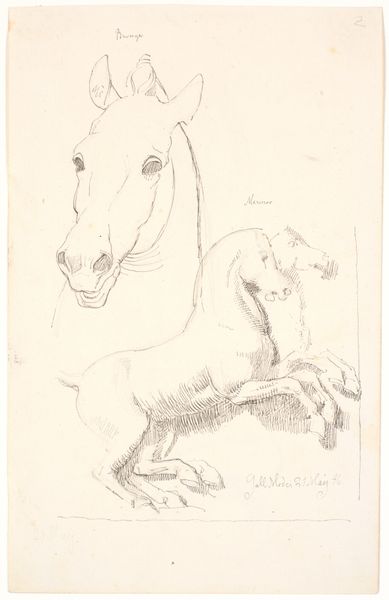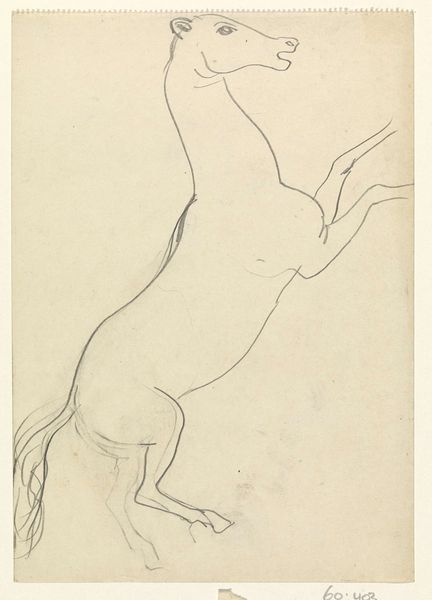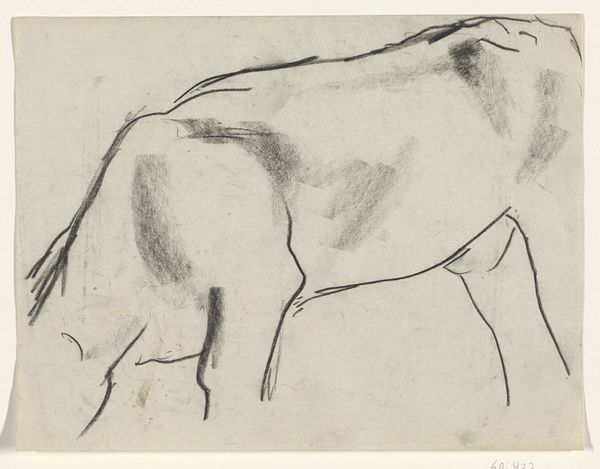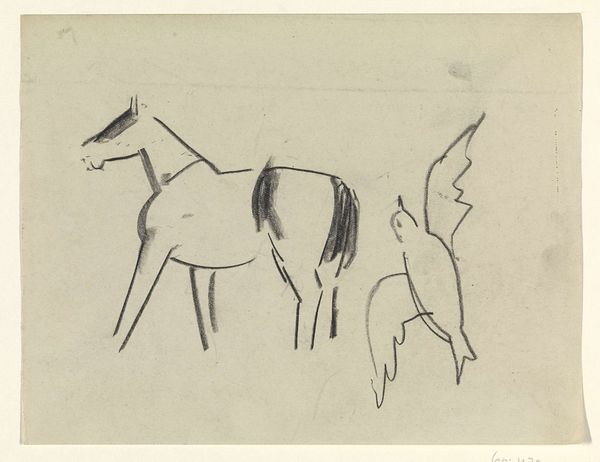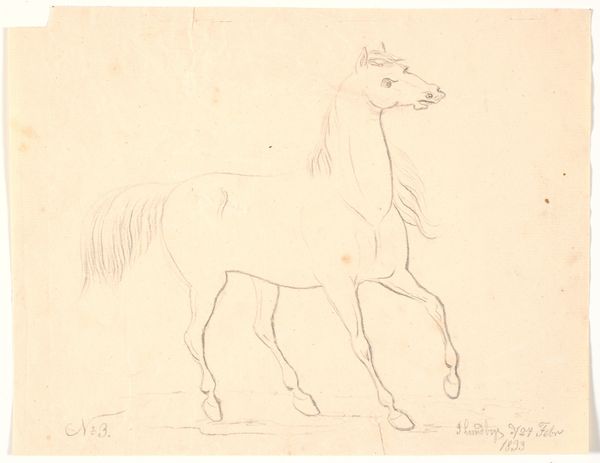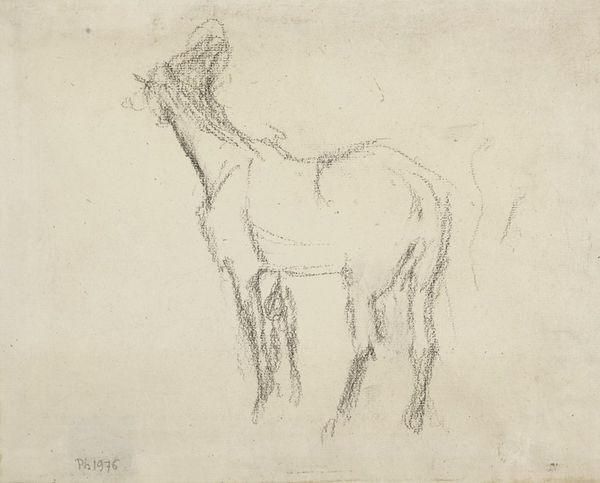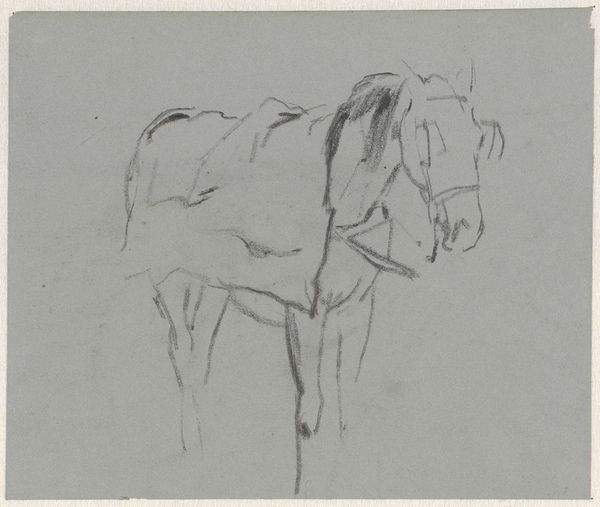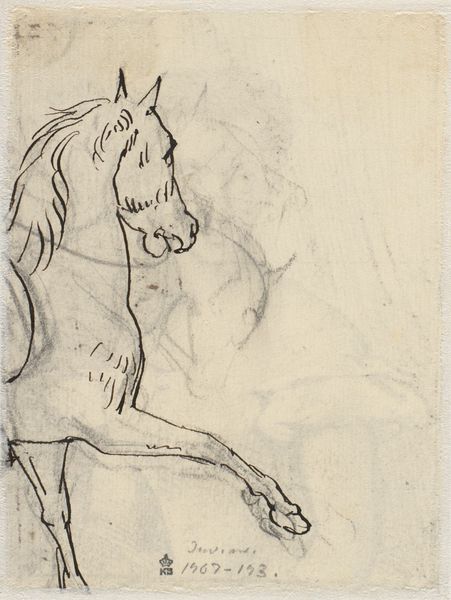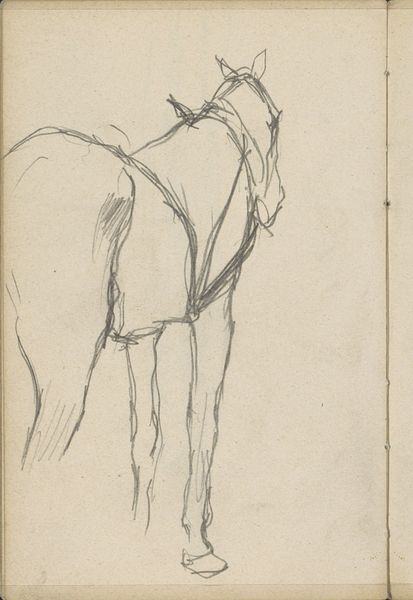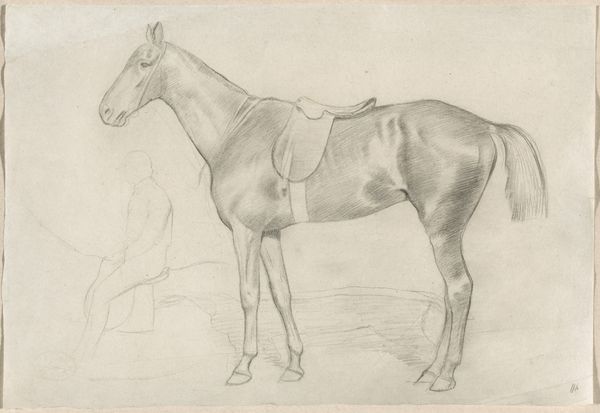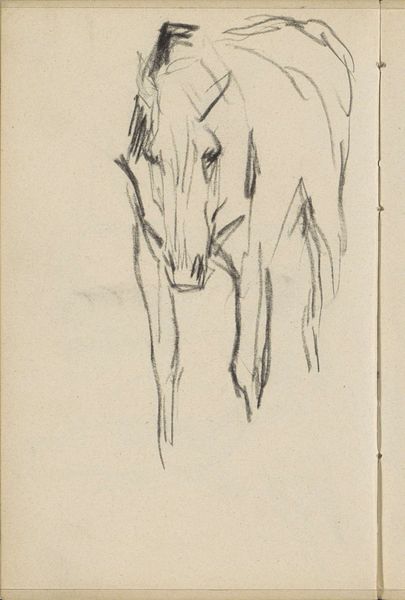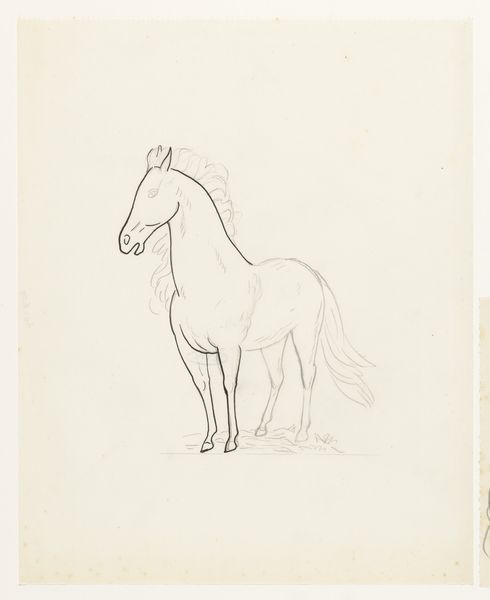
drawing, print, paper, pencil, graphite
#
drawing
# print
#
landscape
#
figuration
#
paper
#
pencil drawing
#
pencil
#
france
#
graphite
#
realism
Dimensions: 322 × 221 mm
Copyright: Public Domain
Curator: Looking at this drawing by Edgar Degas, titled *Horse Turned Three-Quarters*, executed around 1880, I immediately sense a certain tentative quality. Editor: It's interesting you say tentative. My initial reaction is how alive the horse feels, even in these simple lines. There's such implied movement; it seems about to shift its weight, as if disturbed. The starkness seems to amplify its vulnerability and its connection to equine power. Curator: Degas was indeed fascinated with capturing movement, and the horse became an enduring symbol for him. This drawing on paper, though just pencil and graphite, reminds me of classical equestrian sculptures, referencing an historical continuity. Do you feel it echoes something larger about 19th-century French society? Editor: Absolutely. In the late 19th century, horses weren’t merely animals; they were signs of class and industrial ambition. Degas, always interested in representing modernity, returns frequently to the racetrack and portrays equine symbolism. This drawing reflects and refracts through cultural memory—both the enduring prestige of the horse as an emblem, and its gradual supersession by mechanical innovations. Curator: And consider the "unfinished" nature. The rapid, searching lines… It's less a polished portrait, more a study of a moment in time. It captures what interests me most about Degas. It hints at his dedication and careful practice which also appears in the social history of Impressionism and modernity. Editor: It raises questions about the definition of 'finished,' doesn't it? The visible erasures, the light touch… I find it more compelling than many meticulously detailed academic paintings of the era. There's a refreshing honesty here. And to me it almost makes it more evocative, forcing me to fill in the gaps, to imagine its muscles flex, to hear its breath. Curator: Well said. This single horse conveys far more than just equestrian portraiture. For me it evokes time and continuity and cultural connections we can all access through observation and curiosity. Editor: Indeed, it’s a piece that encourages us to slow down, appreciate the simplicity of the moment, and consider the deeper layers of meaning within an image. The convergence of individual insight, art, history, and collective social context creates a rich and layered historical landscape for all audiences.
Comments
No comments
Be the first to comment and join the conversation on the ultimate creative platform.
